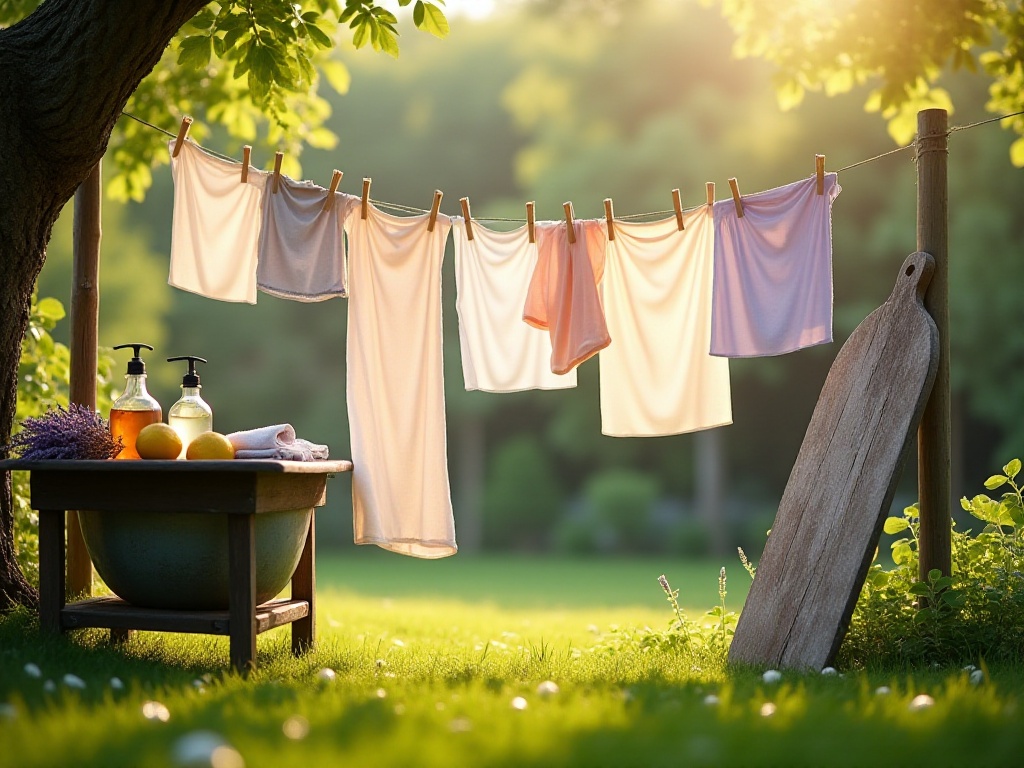
Opening Chat
Oh my god! I just can't believe it! The other day, I watched my roommate throw a four-figure cashmere sweater directly into the washing machine for a violent wash, which left me completely stunned! What's even more ridiculous is that she washed this light gray cashmere sweater together with several dark jeans. The result was predictable - the sweater not only shrank to the size of a doll's clothes but also turned a very strange color.
To be honest, I used to be a complete laundry novice myself. I remember last winter when I threw a wool coat worth nearly two thousand into the washing machine for a rough wash, and that coat was completely ruined. The pain I felt at that time was indescribable; it felt like I had wasted my money. After this painful lesson, I began to seriously study the science of clothing care. After more than a year of exploration and practice, I've finally gained some insights. Today I'll share my experience with you, hoping you can avoid some of these pitfalls.
Classification is Key
First, I want to talk about classification. Many people might think: "It's just washing clothes, right? Just throw them in the washing machine, add some detergent, press a button, and you're done!" But in reality, this mindset can easily ruin your clothes. Through my extended practice, I've found that the most scientific classification method considers three dimensions: color, material, and degree of soiling.
Speaking of color classification, I've had some bitter lessons. I remember once, I had just bought a pair of dark blue raw denim jeans, and I particularly loved that deep color. Then one day I had a brain fade and thought since everything needed washing anyway, I threw them in with several white T-shirts. After washing and drying, all my favorite white T-shirts had turned light blue, looking particularly weird. Since then, I've set myself an iron rule: all white garments must be washed separately in a dedicated laundry bag, absolutely no mixing with clothes of other colors.
I usually separate dark clothes into black items and other dark colors. Because black clothes fade easily, washing them with other dark clothes can cause mutual color bleeding. Light-colored clothes also need attention - beige, light pink, and similar colors should be washed separately from pure white items, as white clothes often use bleach which is too harsh for light-colored garments.
Material classification is even more crucial. Delicate fabrics like silk, wool, and cashmere are a completely different world from regular cotton T-shirts and jeans. I now keep a special basket where I collect all delicate fabric items. When I've collected enough, I either hand wash them at a specific time or take them directly to the dry cleaner. While this is a bit more troublesome, it provides maximum protection for these delicate items.
Regarding classification by soil level, my suggestion is to separate especially dirty clothes for separate treatment. For example, clothes worn during exercise or those with oil stains need special washing methods. If washed with regular clothes, they not only won't get clean but might also soil other clothes.
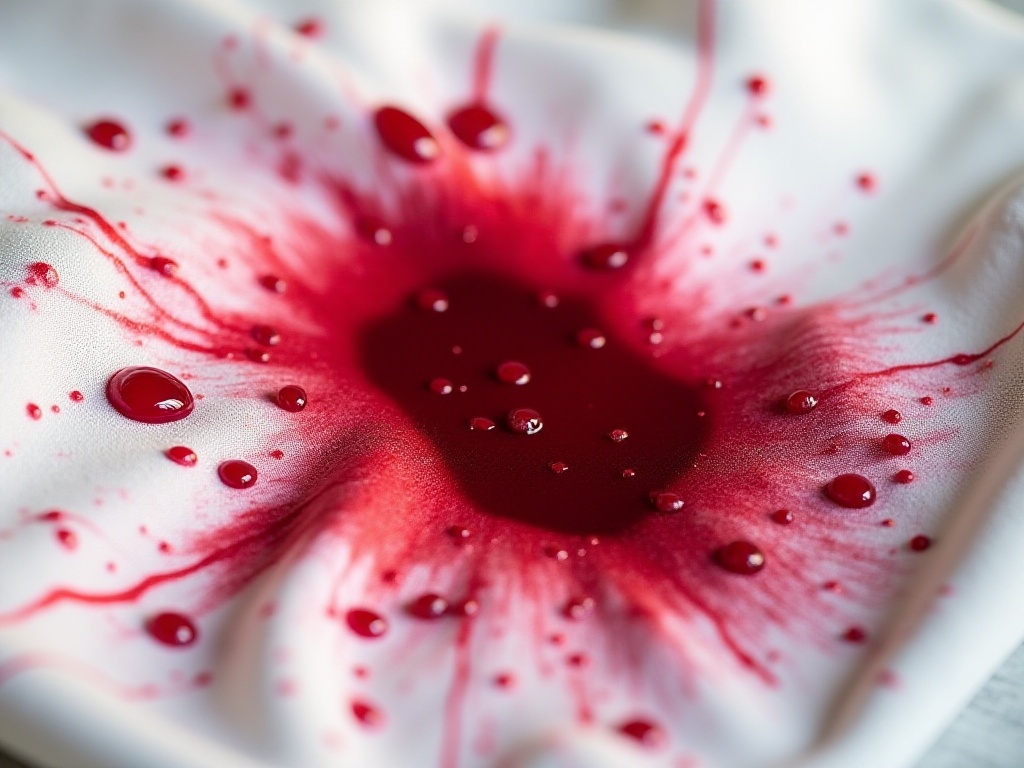
Washing Has Its Rules
Let's talk about specific washing methods. Many people probably never look at the care labels on clothes, finding those little symbols particularly hard to understand. But actually, these labels are the "instruction manual" for clothes, clearly indicating what water temperature to use, whether machine washing is allowed, how to dry them, and so on.
I've collected a chart of care label symbols, and I look up any symbols I don't recognize. Gradually, I've memorized some common symbols. For example, a crossed-out washtub means no water washing, dry clean only; a washtub with dots indicates hand wash only, no machine washing.
Speaking of machine washing, many people make the mistake of stuffing too many clothes into the washing machine. I used to do this often, thinking it would save time to wash more at once. But later I discovered that not only do overcrowded clothes not get clean, they can also damage each other through friction during washing. Now I strictly control the amount of laundry, ensuring it doesn't exceed two-thirds of the drum. This not only gets clothes cleaner but also makes them last longer.
Choosing the right water temperature is also important. Many people might think hotter water means cleaner clothes, but different fabrics actually require different water temperatures. Generally, white cotton items can be washed in water around 40 degrees Celsius to remove bacteria and odors. But colored items are better washed in water below 30 degrees to prevent fading. As for wool, silk, and other delicate fabrics, the water temperature absolutely cannot exceed 30 degrees, or it will easily cause deformation and damage.
Choosing laundry detergent is also a science. There are many types of detergents on the market, including specialized ones for colored clothes, wool, athletic wear, etc. My suggestion is to keep at least two types: one regular detergent for everyday washing of cotton, polyester, and other common fabrics; and another gentle specialized detergent for delicate fabrics.
Another important detail is the amount of detergent used. Many people think more detergent means cleaner clothes, but excess detergent actually remains on clothes, potentially causing skin allergies and making clothes increasingly stiff. Generally, follow the amount indicated on the detergent bottle; if clothes are particularly dirty, you can add a bit more, but don't exceed 1.5 times the recommended amount.
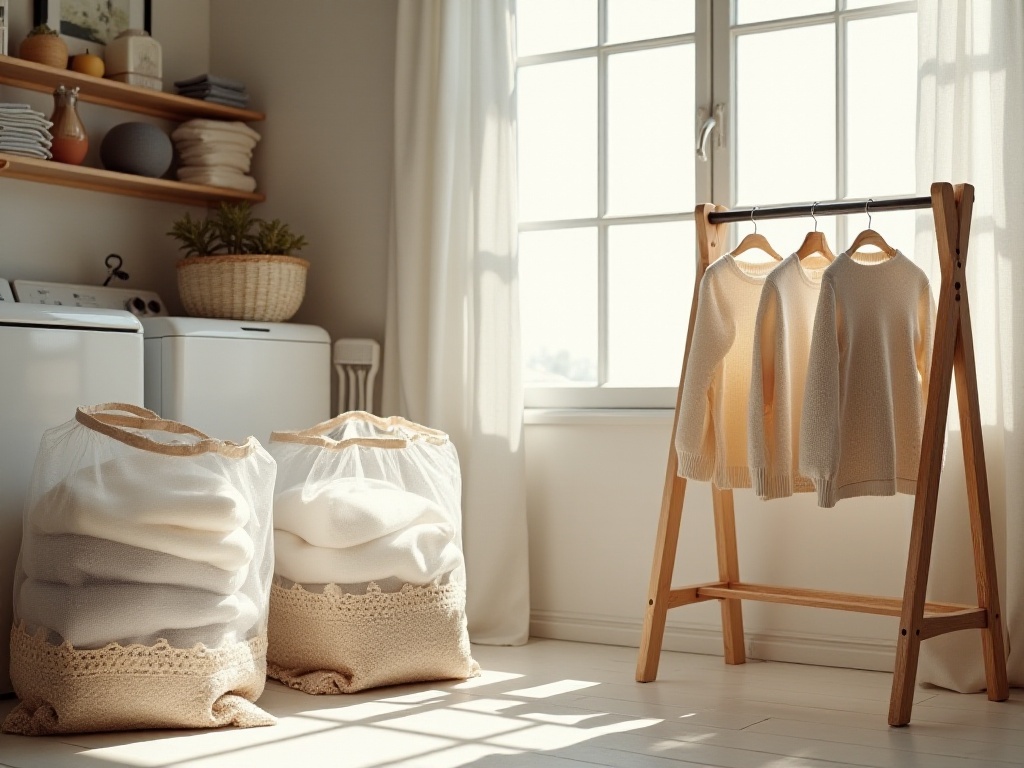
The Secret of Jeans
Speaking of jeans, they're really a special case. Many people might not know that jeans don't actually need frequent washing. I remember being particularly shocked when I first learned this, but later understood there's scientific basis behind it.
First, the biggest characteristic of jeans is that they gradually conform to your body shape with wear, forming unique creases and wear patterns. These details make jeans look more textured, especially those made from raw denim. Frequent washing not only destroys these naturally formed marks but also makes jeans increasingly stiff.
Based on my experience, unless jeans are particularly dirty or smelly, it's completely fine to wear them seven or eight times before washing. If you're concerned about bacteria, you can hang the jeans out to air in the sun for a day - sunlight's sterilizing effect is actually quite good.
When you do need to wash jeans, there are several important points to note. First, you must turn the jeans inside out when washing, as the outer surface is the most susceptible to damage. Use cold or warm water, never hot water, as this can easily cause fading and shrinkage.
When washing, it's best to use a specialized jean detergent, as regular detergent might be too strong. If you can't find specialized detergent, mild shampoo works well too.
The drying method is also important. I usually slightly straighten the jeans and hang them by the waistband with clothespins. This allows the pants to hang naturally, preventing strange wrinkles. Never put jeans in the dryer - high temperatures seriously damage the fabric and can cause deformation.
Caring for Delicate Garments
When it comes to caring for delicate garments, that's truly a major subject. Fabrics like silk, lace, and wool can suffer irreparable damage with the slightest mistake. After multiple attempts and failures, I've summarized some practical care methods.
First are silk items. Silk fabrics are most vulnerable to friction and high temperatures. You must use a gentle specialized cleaner; I often use amino acid shampoo because its cleaning power is moderate and won't damage the silk protein. Water temperature must be kept below 30 degrees, preferably cool water.
When hand washing, be especially careful with pressure - never scrub like you would regular clothes. My method is to soak silk items in water with cleaner for about 10 minutes, then gently move them up and down a few times to remove dirt. If there are localized stains, you can gently press with your fingers, but never scrub hard.
Rinsing also requires extra care, as silk is particularly prone to deformation when wet. I usually change the water two to three times, each time gently moving the garment up and down until the water becomes clear. In the final rinse, you can add a bit of fabric conditioner to maintain silk's smooth feel.
The drying method is also crucial. Silk items are best dried flat; you can set up a special drying net on the balcony. For silk shirts or dresses, you can hang them on hangers, but be sure to use smooth plastic hangers - wooden hangers might stain the fabric when damp.
Wool care methods are similar to silk but with some differences. Wool is most vulnerable to sudden temperature changes, so avoid dramatic temperature shifts whether washing or drying. I usually use special wool detergent and hand wash in water around 30 degrees.
When washing wool items, be particularly careful not to submerge and scrub the garment up and down in water, as this will cause wool fibers to tangle together, forming pills. The correct method is to place the garment in water with detergent, gently press to let water flow through the fibers, then gently squeeze a few times underwater.
When rinsing, use water of the same temperature - never use cold water, as this can cause wool fibers to contract. When wringing out water, don't twist hard; better to gently press with a towel to absorb water. When drying, must lay flat, as wool items are particularly prone to stretching and deforming from their own weight when wet.
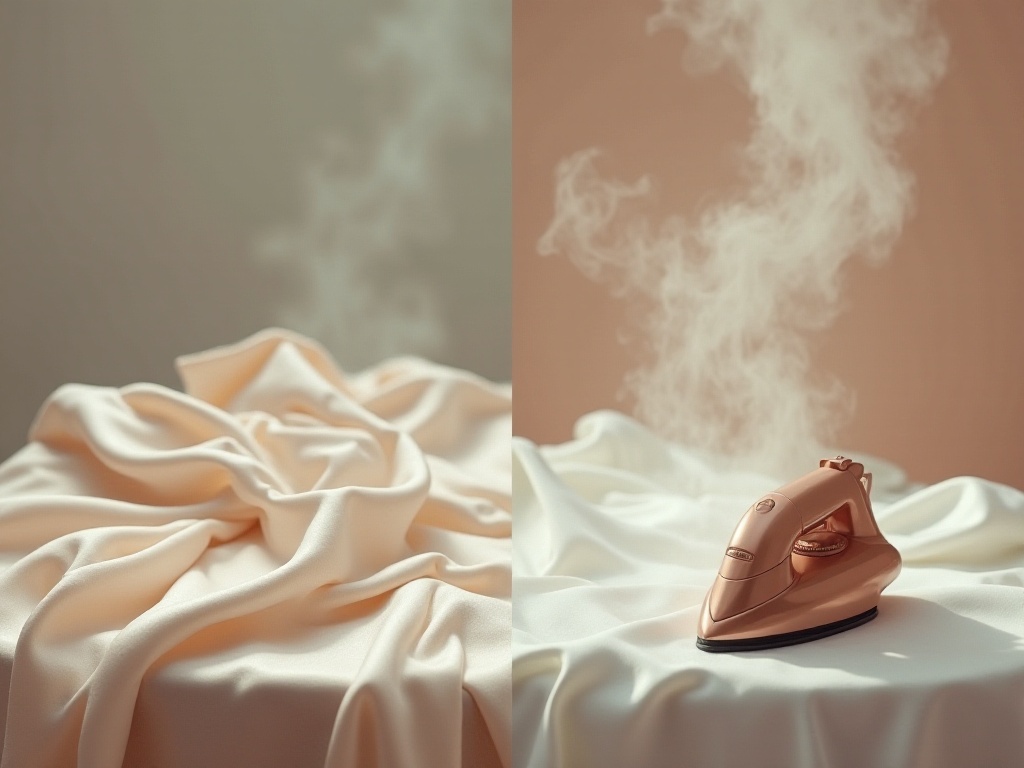
Daily Tips
When it comes to stain removal, I have so many insights to share. The most important principle is "quick" - regardless of the type of stain, the sooner you treat it, the easier it is to remove. I now always carry a stain removal pen for emergencies.
Different types of stains require different treatment methods. For coffee stains, it's best to first absorb surface liquid with tissue paper, then rinse with cold water. If stains remain, you can treat with a specialized stain remover. But note, always test stain removers on an inconspicuous area first to confirm they won't damage the fabric.
Oil stains are more troublesome because oil doesn't dissolve in water. My method is to first absorb surface oil with oil-absorbing paper or talcum powder, then treat with a specialized oil stain cleaner. For less severe oil stains, gently rubbing with dish soap can also remove them.
Lipstick marks are also very common stains. When treating lipstick marks, never rinse directly with water as this will make the stain spread. The correct method is to first gently press with makeup remover oil on a cotton pad to dissolve the lipstick pigments, then treat with cleaner.
Besides stain treatment, another particularly important habit is checking pockets. This reminds me of a bitter experience. Once I forgot to check pants pockets, and a pen leaked in the washing machine, ruining all the clothes in the load. Since then, I carefully check all pockets before washing and clean out everything inside.
Another tip concerns athletic wear. Don't leave sweaty exercise clothes in the laundry basket waiting to be washed together, as bacteria will quickly multiply, producing unpleasant odors. I usually briefly rinse exercise clothes, wring them out, and hang them in a ventilated place, then wash them properly with the next load.
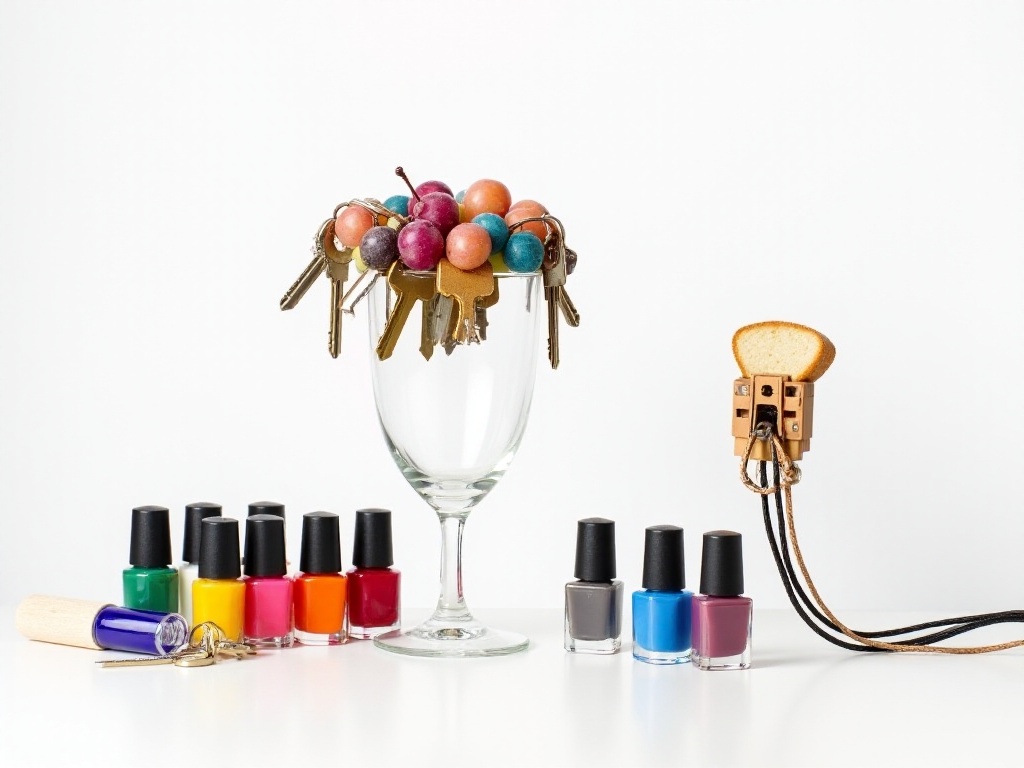
Clothing Storage
Storage can be said to be the most easily overlooked aspect of clothing care, but it's actually very important for garment maintenance. First, let's talk about choosing hangers, which is truly a science.
Different types of clothes need different hangers. Suits and coats are best hung on solid wood hangers, as wooden hangers can not only bear the weight of the garments but also help absorb moisture, preventing mold. However, note that dark wood hangers might stain clothes in humid environments, so light-colored garments should use light-colored wood hangers.
Knitwear and sweaters should not be hung, as hangers will distort the shoulders. The correct storage method is to fold them and place them in drawers or on closet shelves. When folding, be careful not to stack too high, or the clothes at the bottom will become deformed.
Shirts can be hung on plastic hangers, but choose hangers with some shoulder curve to maintain the shirt's shape. Remember to button up shirts when hanging to prevent deformation.
As for ironing, this is also a skilled task. Different fabrics need different temperatures, and using the wrong temperature can damage clothes. Generally, silk and synthetic fabrics need the lowest temperature, wool needs medium temperature, and cotton and linen can use high temperature. It's best to iron clothes while they still have a bit of moisture - this not only makes wrinkles easier to remove but also prevents clothes from becoming shiny.
I keep a special ironing spray and spray it before ironing for better results. When ironing, follow the fabric's grain and don't repeatedly iron the same spot, as this can make clothes become shiny.
When storing, also pay attention to moth and mold prevention. I put moisture absorbers and mothballs in the closet and replace them regularly. During humid seasons, you can put a small fan in the closet to maintain air circulation.

Final Words
Through this year-plus of exploration and practice, I've truly come to understand: caring for clothes isn't a hassle, but a life attitude. When you go out every day wearing well-maintained clothes, the feeling of comfort and confidence is completely different.
Now every piece of clothing in my closet is well-maintained, and clothes I've worn for a long time still look new. Although it takes some time and effort in care, thinking about being able to keep beloved clothes for longer makes all this effort worthwhile.
Actually, clothing care is like tending a small garden, needing careful watering and pruning. When you gradually master these techniques, you'll find the process is actually very interesting and can bring a lot of joy to life. What do you think? Welcome to share your clothing care experiences and insights in the comments section.
Next
Confessions of a Nutritionist: How I Used Scientific Methods to Help 100 Patients Improve Their Eating Habits
A comprehensive guide exploring healthy eating habits and clothing care, covering nutritional principles, dietary control, and eco-friendly garment maintenance methods for a healthy and sustainable lifestyle
After Three Years, I Finally Figured Out How to Do Laundry - Here's What I Learned
A comprehensive guide to clothing care, covering daily washing classification, special fabric maintenance, stain and odor removal, drying and storage techniques, helping readers master scientific clothing care methods to extend garment life
Save Your Precious Wardrobe: Laundry Tips to Keep Your Clothes Looking New
A comprehensive guide to clothing care covering sorting methods, pre-treatment techniques, washing instructions, drying and storage solutions, and effective stain removal methods for various fabric types
Next

Confessions of a Nutritionist: How I Used Scientific Methods to Help 100 Patients Improve Their Eating Habits
A comprehensive guide exploring healthy eating habits and clothing care, covering nutritional principles, dietary control, and eco-friendly garment maintenance methods for a healthy and sustainable lifestyle

After Three Years, I Finally Figured Out How to Do Laundry - Here's What I Learned
A comprehensive guide to clothing care, covering daily washing classification, special fabric maintenance, stain and odor removal, drying and storage techniques, helping readers master scientific clothing care methods to extend garment life

Save Your Precious Wardrobe: Laundry Tips to Keep Your Clothes Looking New
A comprehensive guide to clothing care covering sorting methods, pre-treatment techniques, washing instructions, drying and storage solutions, and effective stain removal methods for various fabric types


